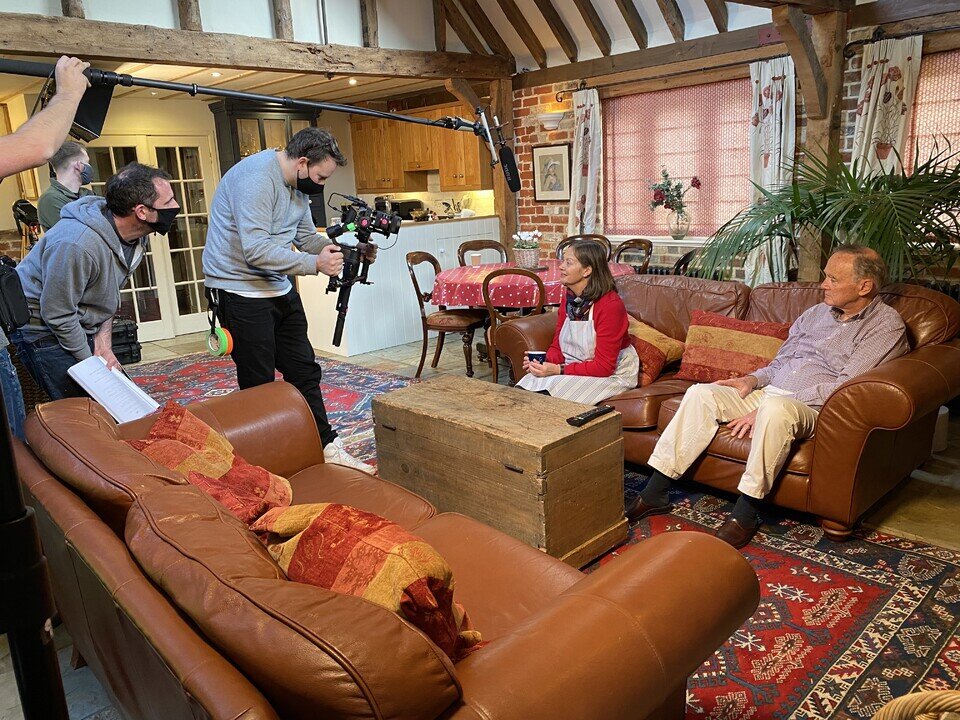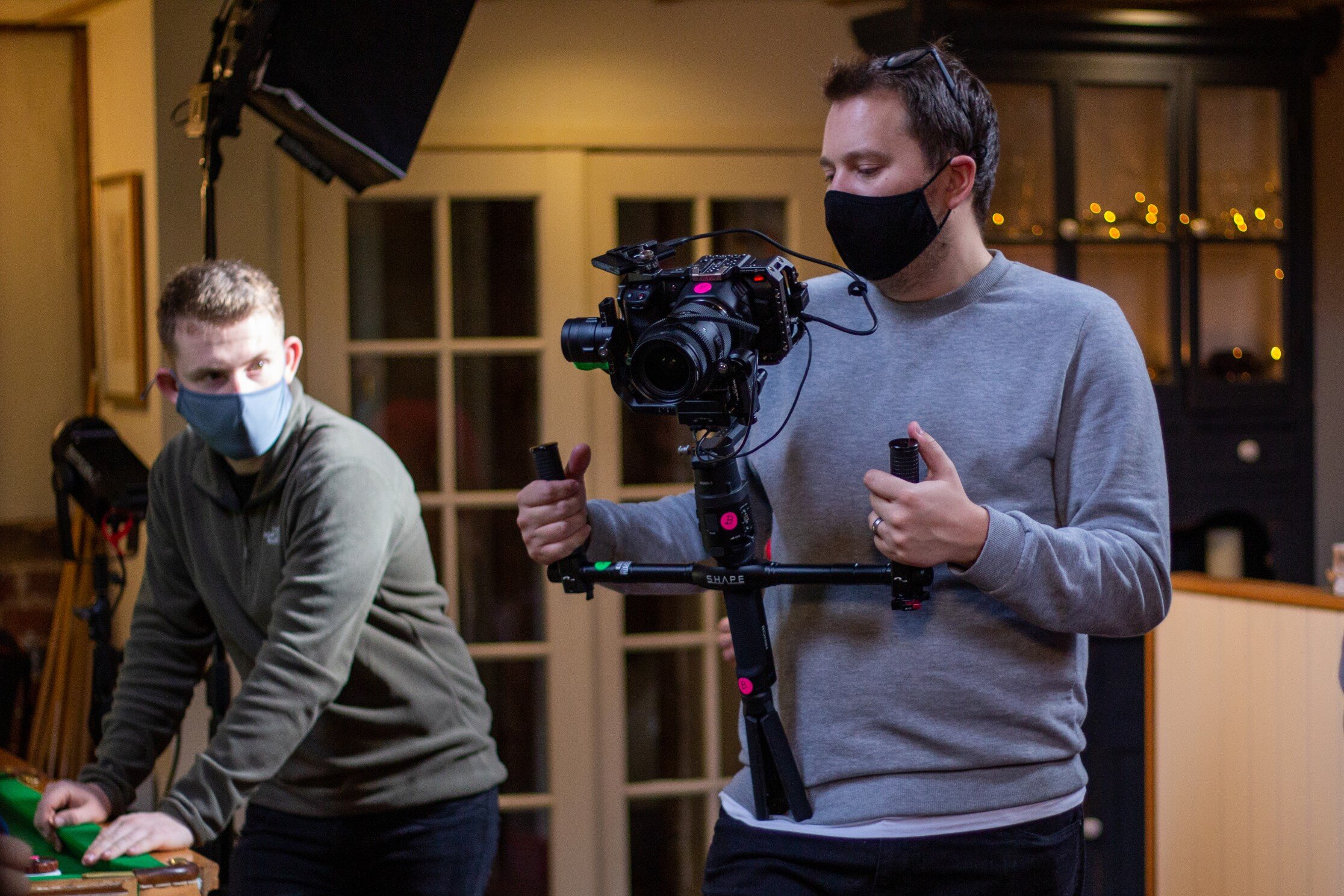Creating a 'Journey to Bethlehem'
Christmas events are always such a huge part of anyone working or serving within a church. It's where we see the most amount of guests step into the building, often for the first time. It takes a lot of planning, so every year the inevitable happens - you’re sitting in a meeting room, in shorts and t-shirts because it’s mid-July, discussing how to create a winter wonderland of a Christmas. This year was no different, although we now had to somehow make it virtual!
Kerith’s Experience Lead, Ben Pocock, dropped his big idea. It’s a nervous start for those listening as he starts with ‘Have you seen the show on Netflix…’! Immediately we know he’s aiming high. He explains a show where the viewer chooses what happens next and where the story goes. A modern twist of the old Gamebooks of a similar concept.
He’d already fleshed out the main concept - a modern day nativity story, incorporating traditional and contemporary music. One hour in length. We’d write the script ourselves, pulling on other creatives in our community.
Straight away the ideas started to fly, and with a whiteboard and pen we started to map out how we take this concept to completion. We are lucky to have an array of seriously talented creatives amongst our volunteer teams, so we started adding names to parts of the project that we knew they would excel at. For Christmas 2020, Journey to Bethlehem was born - a contemporary retelling of the birth of Jesus, navigated through by you.
A sample scene from the final production featuring King Herod.
Finding the Platform
Although we had the idea for the project, we had no idea how we would create it online. We talked about whether we built the platform ourselves, but we wanted the volunteer team to invest their time and skills on other aspects of the project and not be tied up on this. We asked Neil Taylor to head up this part of the project and help us find a solution. Initially we found an existing platform that did what we needed, but the cost was equal to a years worth of our production budget! Just as we started to think we would need to go back to the start, we came across Eko. Another existing platform, but this time was free. After some extensive testing, Neil gave us the green light that this would work perfectly, and yes it did.
Eko provided a web player that could be embedded onto our website, and host all the interaction elements we needed. Within the software we were also able to add all the interactive buttons which made the choices and attach our .srt subtitle files to serve our BSL community. A huge thank you as always to McGowan Transcriptions who are always supporting us in our captioning work.
Neil then did some final additional coding to give us comprehensive breakdowns of engagement, so that we could keep track of that across the project after it had launched.
An insight into the backend spiders web, which held all the choices together.
Workflow Changes
Until September, our editing team had mainly only used Adobe Premiere for our video edits. We had been dabbling in Blackmagic’s DaVinci Resolve 16, after friends of ours at MediaNerd Ltd had made the switch a few years prior. After completing a few test projects, and sending the team on a brilliant training course ran by Soho Editors, it confirmed that it was not only the perfect tool for this specific project, but likely also our future workflow.
There were a few growing pains at this point, as the size of the project files were larger than we anticipated. The biggest challenge was how to deal with the 5tb of data! We looked at various server and mass storage solutions, but neither were cost or time effective at this point. Instead, we spread the content across multiple SSD drives, which were all colour coded. These gave us enough speed to edit well, and quickly switch footage between both editors.
Another issue we faced was how to effectively have two editors working on the project at the same time. Now DaVinci Resolve does have tools for calibration work, but they require a separate server, which we couldn't build in the time scale. Instead, we split the workload between the two people. Narration scenes for one (I took this on as I had been involved with the script for the longest), musical scenes for the other (Kerith's Production engineer Josh Boyle handled this as he has a fantastic understanding of music), which turned out to be an almost perfect distribution. This was all effectively tracked with live documents, where you could view not only who was working on the scenes, but where the footage was located and where in the process pipeline it was.
As we started to get through the first round of edits, we realised that sharing the edits for comments from the director was going to be quite the task. Usually we either physically had them in the room to check, or uploaded it privately to YouTube. Due to COVID, there was minimal physical time with the director and, although the YouTube uploads would work, it was time consuming and clunky. Following a chance advert, we came across the brilliant frame.io which was a complete game changer.
For those not familiar with Frame.io, it’s a tool for sharing video content with other people in the production process and allows them to comment. Where it really excelled was the fact you could export and upload to frame.io direct out of DaVinci Resolve, and any comments left by the director appeared directly on the timeline. This saved a huge amount of time for everyone involved.
The audio mix was being handled by another editor (and volunteer), James Hosker, working remotely. The process of getting him the video and audio files was really smooth. We exported a 720p video file, and then all the .wav and .aaf files from the timeline, which seamlessly imported into ProTools. He could then bounce back a mixed .wav file, which went straight back onto the video timeline.
Filming logistics
In previous years, we had been producing videos as part of our Christmas Carol concerts, which had grown in production value and complexity over the years. But this project was much more of a leap. Never had we produced something that would have a runtime of over two hours (when you include all possible options) and is heavily a drama production.
We hired an AirBnB property in Dorking, which covered around 80% of filming. Then the rest was filmed on location across Bracknell and Camberley. We also utilised our auditoriums 3.8mm LED screen to create the location for Caesar's decree.
For equipment, we shot the whole thing on our two Blackmagic Pocket Cinema Cameras. We filmed in 4K, ProRes 422, which was the right balance of file size and flexibility in post production. Most scenes were shot using our 2x Ronin-S gimbal scenes, then some handheld and tripod work thrown in.
For lighting , we needed fixtures which we could deploy quickly, be battery powered when needed, and flexible. With a small crew, we didn't have time for long setup times. Version2, who we have used for dry hire many times, supplied us with an array of fixtures to suit every situation. From larger LitePanels Astra 1x1s, right down to Aladiin A-lite kits for the subtle work. In addition to these, we also had our own Aputure 120d kits.
Behind the scenes filming at our Dorking location.
Music creation
The audio workflow was a huge part of the project, that had the ability to become extremely complicated and time consuming if it wasn't meticulously planned. The audio work could be split into three categories: narration, worship/contemporary songs, and soundtrack/special FXs.
Narration
We are grateful that all the narration was done by the same two people in the same location. These were recorded on set, mostly via an autocue system. These were then synced with the footage right at the beginning of the edit workflow, and stayed there until being handed back to the audio editor at the end.
Worship/Contemporary Music
Within Journey to Bethlehem, there were 15 different tracks that needed to be recorded and mixed. Five of those also needed to be performed on camera. This is how we broke it down:
Dave Hulme, a volunteer who was one of our music directors, created a guide track for every song. For anyone who isn't familiar with these, they are the track with direction for the musicians (when to come in, what’s next, tempo etc.). Then, each of the 14 vocalists came in to be recorded in the space of a week. Using this guide track, they were able to sing along, while staying completely in time. Our four talented musicians also did the same, however they mostly recorded from home as they already had the ability to..
The guide tracks, vocals and musician parts were then packaged up ready for the volunteer audio team to take four tracks each, and mix over the course of a few weeks. This was all done remotely, with draft mixes being shared in a Whatsapp group for everyone to comment and learn from. Sometimes these feedback groups can cause issues, with people being very protective over their creative work, but this team were the opposite. There was so much encouragement, learning and positive feedback shared, which everyone benefited from.
For the five songs that needed to be recorded in front of camera, we played an early version of the mix loud in the room, and vocalists and musicians mimed along. This meant the full focus could be on the video recording and we certainly benefited from not having the extra stress of audio recording!
Soundtrack / Special FXs
James Hosker was responsible for the very final mastering of the mix. As explained earlier, he was sent a finished version of the edits, including each audio steam. He then did a final mix, added any special effects and sent the finished stereo recording back to us, ready to be exported with the video. You should never underestimate the power of what we hear, as well as see, as often once we get the final audio back, it has the ability to completely transform the feel of a scene, always for the better.
What a way to end 2020
We have been incredibly proud of what the team has achieved through the Journey to Bethlehem project. Many parts of the project were new ways of working for us, but in truth, we had all been training for them in the years previously.We constantly try to push the boundaries of production. Kerith is blessed with some extremely talented and committed volunteers, who poured days and days of their free time into this project. Without them, it would not have been possible. Now...it’s just three months till Easter...
Watch the full footage below, and we'd love to know what you think. Now...time to start planning Easter...



